A lawn spreader is an essential piece of gardening equipment you need if your lawn is in need of work. It can make your life much easier by giving you a convenient way to spread fertilizer or plant seeds, and there are various types to choose from.
What are the main types of lawn spreaders? There are two main types of lawn spreaders. These are broadcast spreaders and drop spreaders. They both have pros and cons to consider.
With that in mind, let’s take a look at how to use a lawn spreader the correct way, depending on the type of spreader that you are interested in purchasing for your lawn. But first, let’s look at how lawn spreaders work.
Table of Contents
How Does A Lawn Spreader Work?
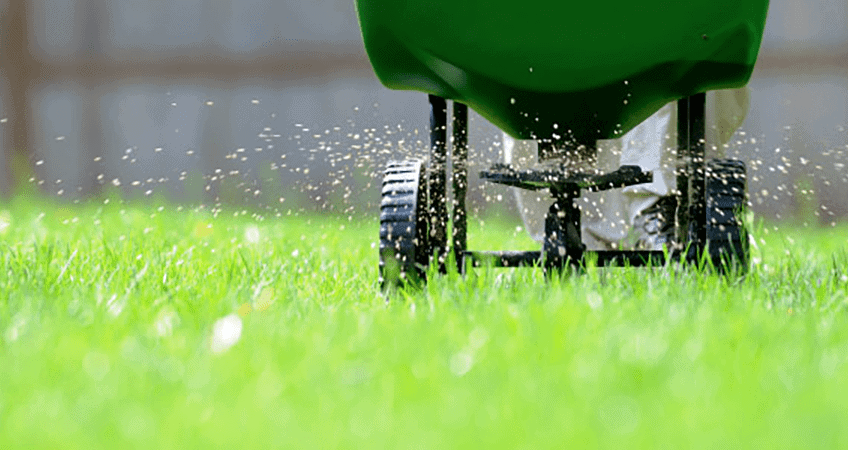
You can find lawn spreaders that attach to your tractor, are worn on your chest, or that you push along your lawn. They come in various sizes and they’re easier to use than if you had to spread products by hand.
The two main types of lawn spreaders are:
- Broadcast lawn spreader: These are ideal spreaders for larger properties. How they work is that they have a rotating device placed underneath their container, or hopper as it’s called, and then the fertilizer or seeds get released in a fanlike way over the lawn.
- Drop lawn spreader: These contain a type of bucket in which fertilizer or seeds are places and it’s usually mounted on wheels so that you can push it along over the lawn where you want the product to be applied. This makes drop lawn spreaders very accurate, and they’re great for applying product to spots in your garden that need more attention than others.
How To Use A Lawn Spreader
Although lawn spreaders can make your work in the garden a lot easier, they need to be used correctly in order to really give you bang for your buck, especially because some types can be a bit expensive.
Here’s a step-by-step guide to using a lawn spreader correctly.
Step One: Set The Rate Of Flow
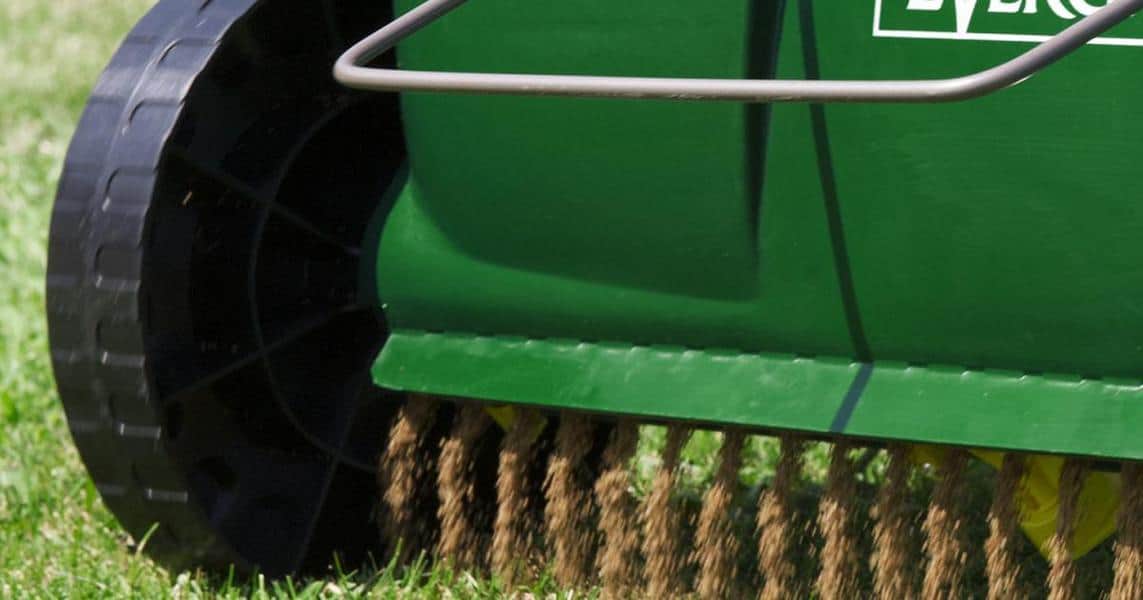
You can set how slowly or quickly the fertilizer or seed that you’re applying to your lawn is applied, and this is an important step to do before using the lawn spreader.
Most spreaders will have a dial and flow lever that you can use. The higher you set the flow rate, the larger the hole in your hopper will be to release more product.
When filling your lawn spreader hopper, make sure you do so on a pavement or walkway in your garden so that you don’t spill some out onto your lawn.
Step Two: Choose A Scatter Pattern
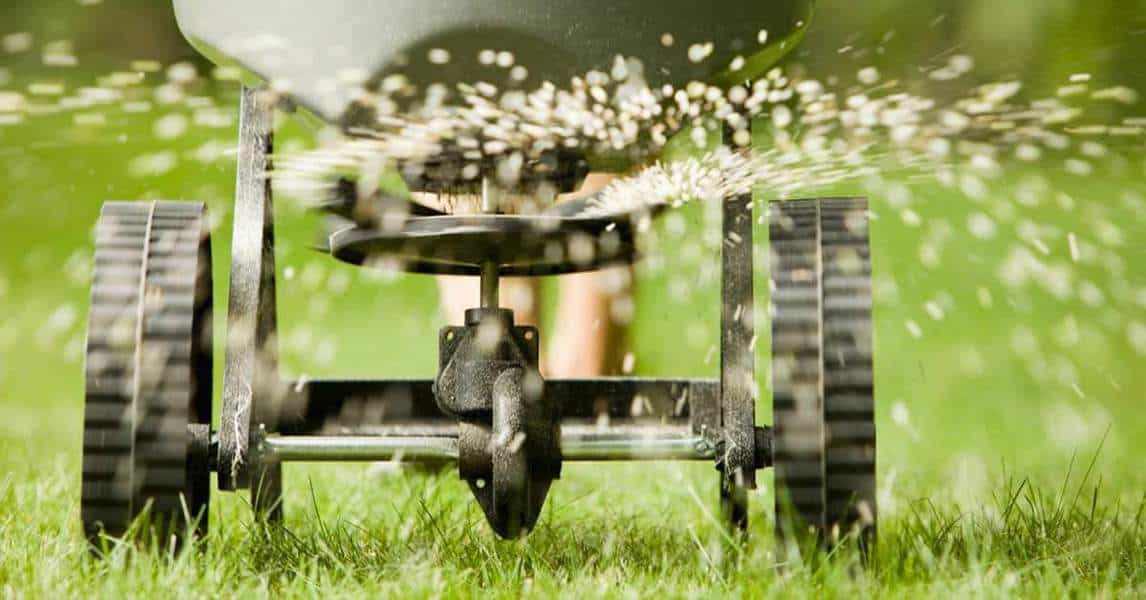
Lawn spreaders will usually have different settings so you can choose the right pattern for how the fertilizer or seed will be released.
For example, it might use a fanlike motion.
To choose and set a pattern, you first want to check that how the product is being released from the hopper is suitable.
So, check that the flow lever is closed, then fill up your hopper, open the flow lever and then push the spreader for three paces of your normal walking speed, if it’s a spreader that you will use by pushing in front of you.
Then, close the spreader lever, take another step and then stop the spreader so that you can check how the product has been released and in what pattern, as Family Handyman reports.
Pro tip: Make sure you test how the products are released by the spreader on a walkway or driveway so that you can scoop up the material from the ground and not let it go to waste.
Step Three: Start Using The Spreader
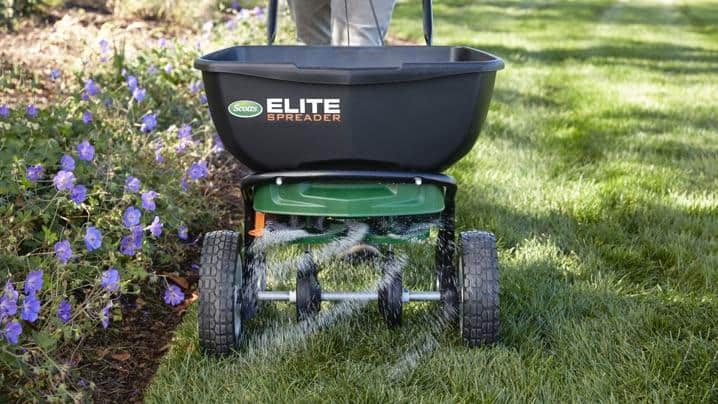
Now that you’ve tested the spreader and have filled its hopper with material, you can start using it.
Make sure the impeller (rotor) runs parallel to the ground throughout the process and make sure you have filled two-thirds of the hopper if you’re using the spreader on inclines or rough terrain.
Here’s why a level impeller is important: It ensures that you can spread the product more accurately and evenly, and can also prevent the spreader from bouncing along the ground so you don’t get uneven spreading.
Step Four: Start In The Rougher Patches
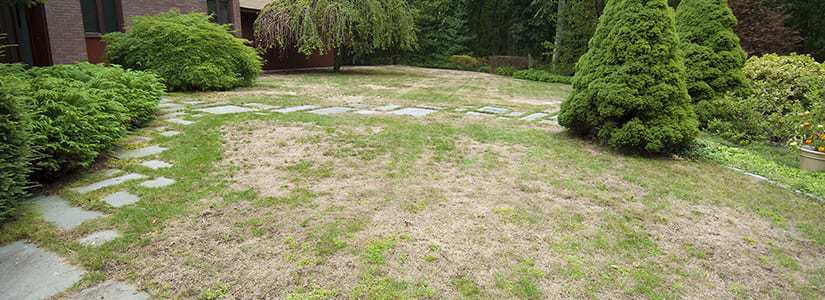
If you have inclines or rough terrain in your garden, you should start with these first. This ensures that the hopper is nice and full and will prevent the above-mentioned problems from occurring.
Step Five: Walk At The Right Pace
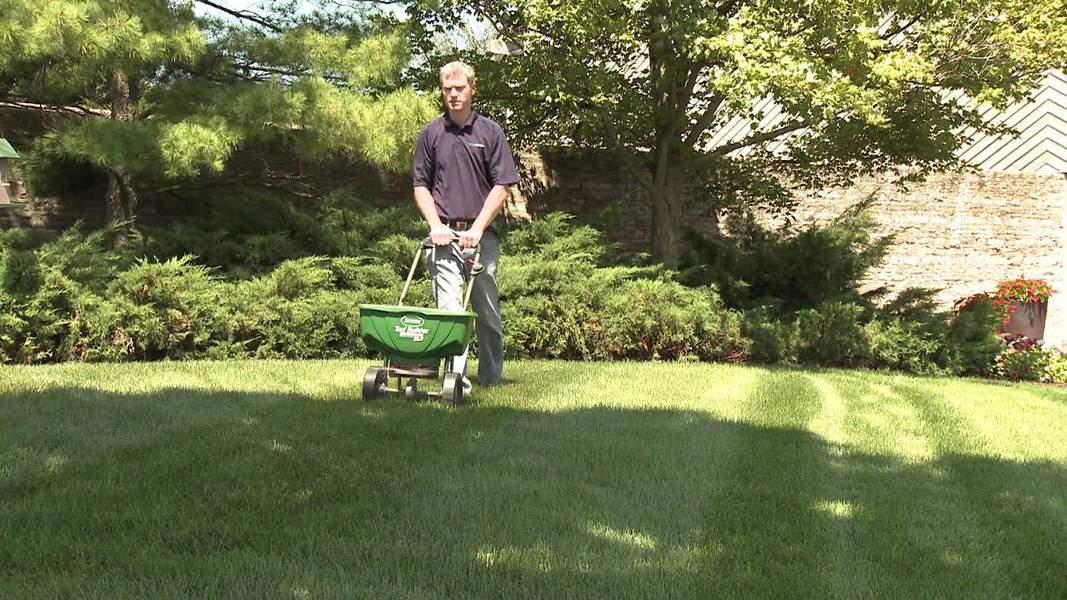
Of course, it should go without saying that you should maintain a steady pace all over the lawn to ensure that every inch of lawn gets the same amount of fertilizer or seed.
You should also walk forwards with the spreader. But, at what pace should you walk?
Whether you’re using a broadcast, drop, or hand spreader, here’s a good tip from Family Handyman: use the pace at which you’d walk a midsized, middle-aged dog, which would be approximately three miles per hour.
Avoid the temptation to walk too slowly, though, even though this might seem to make the most sense to get all your lawn covered.
If you walk too slowly, you might release too much product, which can be problematic. Too much fertilizer on certain areas of the lawn can result in burning the grass.
Step Six: Remember To Close The Hopper At Crucial Times
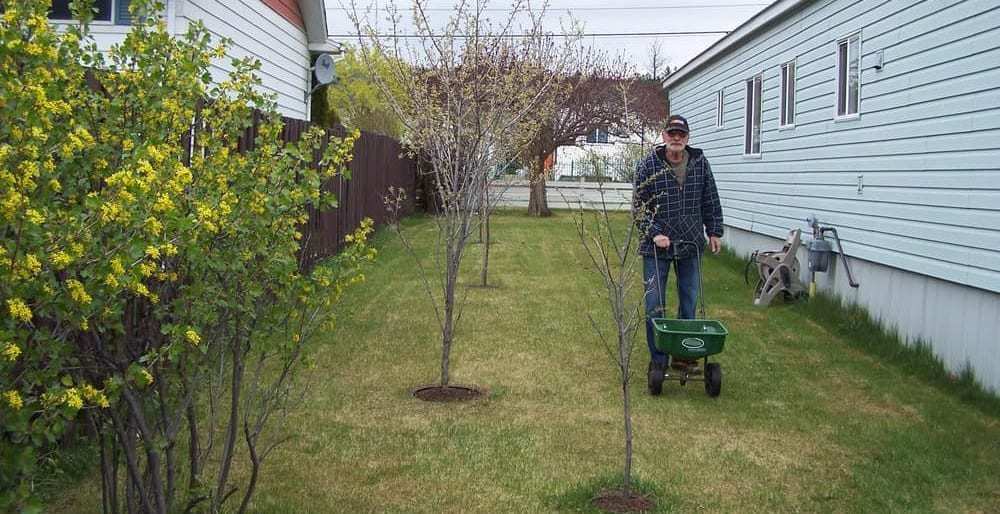
If you stop at any time throughout the spreading process, you have to close the flow lever so that product no longer gets released onto the lawn.
In addition, you should also close this lever when you make a turn in your garden. This prevents too much product from being scattered over bends and turns in your garden.
What About A Behind Tow Spreader?
A behind tow spreader basically means that the spreader is attached to the back of a rider or tractor.
Since you’re not walking when using this type of spreader, there are some important steps to follow when using it.
- Avoid using powdered chemicals in your behind tow spreader. The reason why is because they don’t provide a broadcast, or fanlike, pattern to provide even distribution.
- To attach the spreader to your tractor or rider, you need to insert a hitch pin into the hole of the bracket.
- Calculate how much material you should put into the hopper based on the size of your lawn. The owner’s manual of your spreader will likely have instructions and settings.
- During the spreading process, make sure you switch off the spreader when turning or stopping to prevent too much fertilizer or seed from being released by the hopper.
What Is The Best Fertilizer For Your Garden?
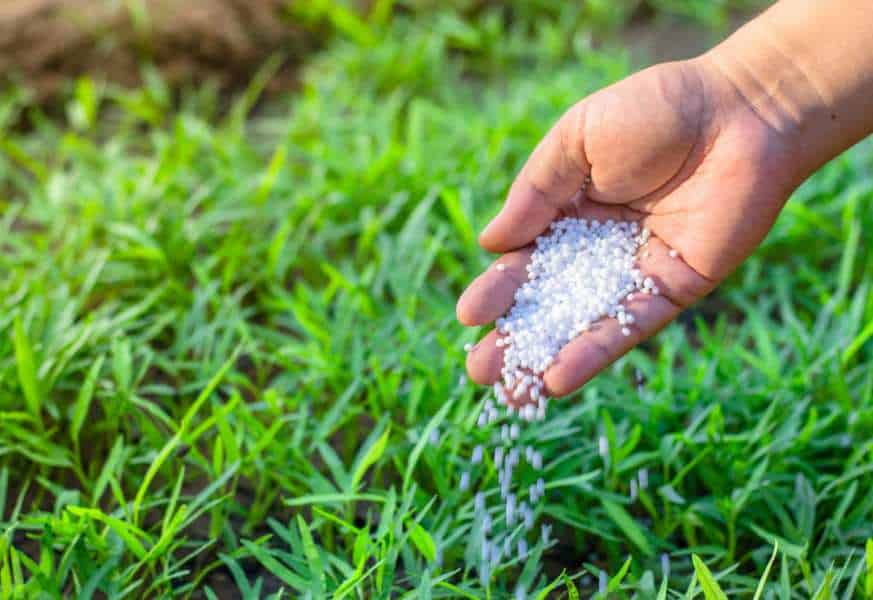
When using fertilizer, you have to make sure you choose the right type that gives your lawn the nutrients it needs to grow and be healthy.
It is said that most gardens will do well with a complete fertilizer and that this should have phosphorus, nitrogen, and potassium. However, the amount of phosphorus in the fertilizer should be twice as much as the amounts of the other two nutrients.
Before you purchase a fertilizer for your lawn, make sure you have your soil tested. It might actually have too much of certain nutrients and not be in need of more, so you want to avoid giving it more.
You should also test the soil pH. This is important because if it’s too acidic or alkaline, this can prevent the plants from being able to draw nutrients from it.
To test your soil, you can purchase a home pH test or you can make your own DIY test with a few ingredients you have at home, as Gardening Channel reports. Simply add half a cup of vinegar and apply it to the soil where you are planting grass and other items.
If the soil fizzes, then the soil is alkaline. If it doesn’t fizz, then you should take some soil, about two tablespoons, from your garden and put it into a container.
Add distilled water to the soil until the soil becomes muddy. Now, add baking soda to it. If it fizzes, then you have acidic soil.
If your soil doesn’t do anything after you’ve done both of these tests, then it’s neutral, with a pH of 7.
Related Questions
What are the numbers on fertilizer bags?
They refer to the nutrients in the fertilizer. The first number is the amount of nitrogen, the second is phosphate, and the third is the amount of potash, potassium-rich salt.
Is there such a thing as giving your garden too much fertilizer?
Yes, this is harmful to your lawn and plants because it can burn them or inhibit their growth process, as Iowa State University reports. So, always go with a “less is more” approach.
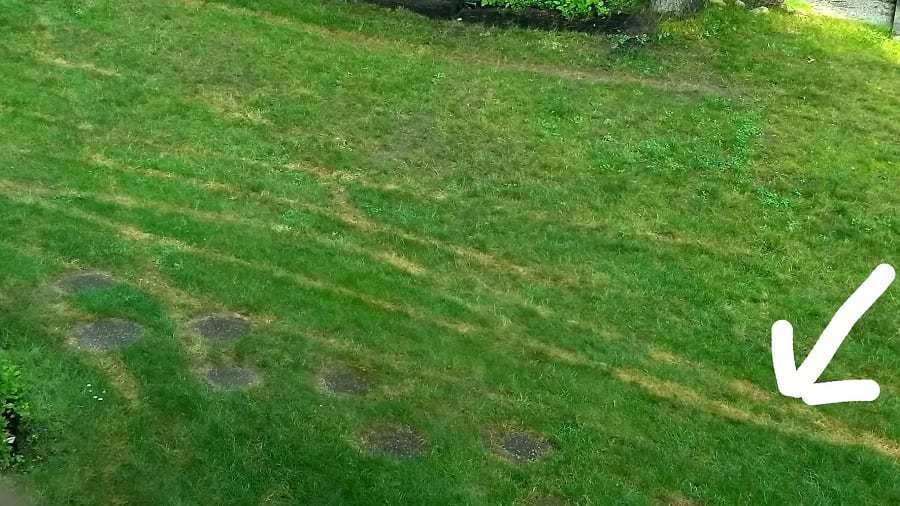
Conclusion
If you’re interested in purchasing a lawn spreader, it’s one of the best things you can do to give your lawn the right amount of fertilizer, and apply it in an even way.
After reading this article, you will have all the facts you need to use a lawn spreader in the most effective way.
Last Updated on August 22, 2022 by Gustaf Johansson




